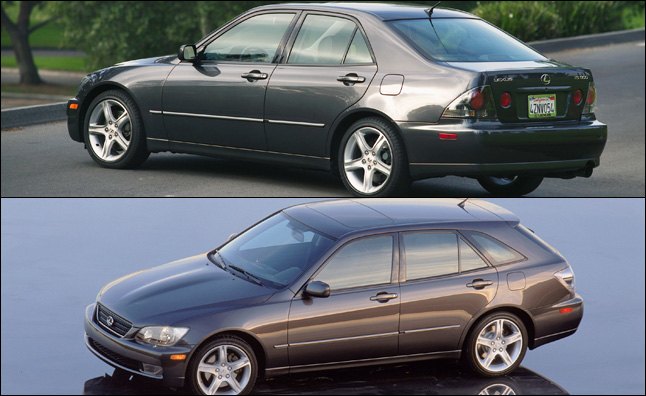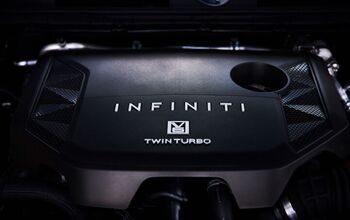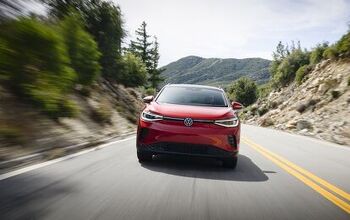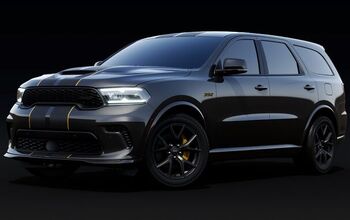The Road Travelled: A Look Back at the Lexus IS

Back in 2000, Lexus established its LS and GS models, but was sorely lacking a ‘foundation’ car to attract new customers, which is why it launched the first generation IS.
“Each of those three brands ( Audi, BMW and Mercedes) had entry-level models as part of a strategy to attract customers and build that as a foundation for later premium model upgrades,” says Bill Kwong of Lexus Communications.
So it was decided that Toyota’s luxury division needed something to go toe-to-toe with the German sport-sedans, and something that would bring people into the Lexus family. “The first generation IS was born with a critically important mission to support the foundation of the Lexus brand,” outlines Kwong. “Vehicle development aimed at creating a distinctive identity capable of going head-to-head with the German three in the sport sedan market.”
A SPORTIER LEXUS ARRIVES ON THE SCENE
That vehicle was the first generation Lexus IS, which launched in Japan in 1998, Europe in 1999 and North America in 2000, bringing the brand to a wider and younger audience. Lexus took no shortcuts with the IS, looking to fight the German competition in every possible dimension. For example, the IS used a straight-six engine, just like the popular BMW 3 Series. A non-turbo version of the Supra’s straight-six, it made an impressive 220 hp.
With the IS in the ‘sport-sedan’ segment, it needed the tried and true front-engine, rear-wheel drive layout. That alone won’t sell sporty cars though, and so Lexus employed none other than Nobuaki Katayama to be the chief engineer of the IS. Katayama was a member of the same team that put together the now famous Toyota Corolla AE86, a car known for its fun-to-drive personality and for being the inspiration for the Scion FR-S. Katayama is said to have a strong motorsport background and was known to drive his cars hard and fast.
The result wasn’t surprising, with reviewers remarking on the car’s interior quality, putting the traditionally sterile feel of the German competition’s interiors to shame. Critics also found that the first generation IS300 was a torquey and precise sedan, and ultimately a solid, reliable rival for the likes of BMW and Audi. Lexus even had a wagon variant to compete with the German avant/station wagons.
“It was a solid entry and is probably the most engaging Lexus (minus the LFA) to come out in the last decade,” says Dave Sullivan, product analyst at AutoPacific.com. “It had a solid chassis, strong powertrains, and a dynamic personality.”
The automatic transmission (which was the only gearbox available on earlier IS300s) was a sore spot, as was some harshness in city driving. Sales of the first generation weren’t impressive compared to other rivals, so perhaps the IS’s priority of sportiness wasn’t appealing to buyers.
SECOND GEN SHOWS UP IN 2006
That’s precisely where the second generation picked up the slack. Chief engineer Katayama apparently outlined 200 items to change between the two generations of the car.
Featuring a dramatically different design, the IS250 and 350 which debuted in 2006 tripled the sales of the last-gen model in its first year of production.
SEE ALSO: 2009 Lexus IS350 Review
The IS had both a fresh look and a different mission statement. “Development of the second generation IS aimed at strengthening its position as an entry-level model,” Kwong says. The new IS aimed to, “deliver world-class performance that surpassed that of the German three, and that provided new value as a next-generation Lexus model.”
With the first-gen product bringing the Lexus brand up to the standard of the competition, Lexus primed its second generation product to go beyond its rivals, and offer up the traditional Lexus values of reliability and luxury to a more affordable level.
“The second generation IS marked a fresh new start as a model that stood shoulder to shoulder with the GS and LS in clearly demonstrating the core values of the Lexus brand,” he says.
The exterior became a defining element of the IS, something that is carried into the new third-gen sport-sedan. “The exterior design incorporates a dynamic image that evoked anticipation of sophisticated and powerful driving performance into an intelligent package,” says Kwong.
In AutoGuide.com reviews of the second generation models, several editors highlight the styling, calling the exterior everything from athletic looking, to stylish without looking pretentious.
SEE ALSO: 2009 Lexus IS350 Review
The IS proved to be a tricky product to market. “The IS went after a customer that Lexus wasn’t familiar with,” Sullivan explains. “Lexus was good at making FWD vehicles like the ES and RX,” not rear-wheel drive sporty cars.
It seems Lexus forgot about the drive, as reviewers found the newer vehicle lacked steering-feel, despite its impressive handling prowess. Furthermore, the big V6 wasn’t available at all with a manual transmission, forcing enthusiasts go to the lethargic 2.5L V6.
The buying public didn’t care too much for those small flaws, and loved the IS’s new looks and luxury staples.
“People that wanted a sporty car went to the German brands,” Sullivan explains. “BMW buyers don’t tend to cross shop Lexus.”
The 2014 model doesn’t stray too far away from the last generations formula, which isn’t a bad thing.
“The IS never had anything fundamentally wrong with it but it was hasn’t exactly overcome the image that Lexus has as the comfy cruiser,” Sullivan says.
LEXUS SPORT-SEDAN SPREADS APPEAL
To help shed some of that stigma, Lexus launched its first performance vehicle, the IS-F.
“It built upon the concept of proposing a new breed of Lexus performance by refining every detail related to basic performance,” Kwong said. “It also providing new technologies geared specifically toward driving performance, the IS F aimed to take the joy of driving to the extreme.”
SEE ALSO: 2011 Lexus IS-F Review
“Most components related to driving performance were developed exclusively, from the engine, transmission and suspension to the aluminum wheels and tires,” Kwong said, and to test the car what better place than the mecca of performance cars, the Nurburgring. “Thorough testing conducted on circuits in Japan and abroad, including the Northern Loop at Nürburgring and Fuji Speedway, helped achieve performance that was unique to the IS-F.”
With the track-ready IS-F on the market, Lexus also decided to make the IS appeal to more lifestyle buyers with a convertible-coupe, the IS C.
IS THE FUTURE IS BRIGHT FOR THE 2014 IS?
While the first generation IS proved its worth as a sport-sedan, the second generation showed how versatile entry-level luxury cars can be. With the new 2014 IS, Lexus wants to take the two generations and combine them into one. “It must take the ‘Fun to Drive’ experience and distinctive sporty design, strands of its DNA, and raise them to a much higher level,” Says Kwong. “The new IS combines driving performance and practicality of the highest level.”
SEE ALSO: 2014 Lexus IS Prototype Review
A new drive mode selector helps to dial in a sportier feeling car when called for, while the entry level Lexus still maintains its luxury feel and quality. Kwong points out, that’s just as important since, “strengthening the functionality of the new IS can be one and the same with strengthening the Lexus brand itself.”
Still, the new IS has an impressive pedigree, as the last generations were recognized globally, winning enough awards to fill a trophy-case or two. Our early impressions of a prototype indicate that the IS is still more luxury than sport, while optional F-Sport packages help give the performance a boost for those who want it.
Check back Monday March 25 for our First Drive of the 2014 Lexus IS.

Sami has an unquenchable thirst for car knowledge and has been at AutoGuide for the past six years. He has a degree in journalism and media studies from the University of Guelph-Humber in Toronto and has won multiple journalism awards from the Automotive Journalist Association of Canada. Sami is also on the jury for the World Car Awards.
More by Sami Haj-Assaad









































Comments
Join the conversation